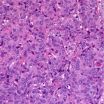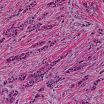(Press-News.org) PITTSBURGH, Feb. 26, 2014 – The second-most common type of breast cancer is a very different disease than the most common and appears to be a good candidate for a personalized approach to treatment, according to a multidisciplinary team led by University of Pittsburgh Cancer Institute (UPCI) scientists.
Invasive lobular carcinoma, which is characterized by a unique growth pattern in breast tissue that fails to form a lump, has distinct genetic markers that indicate there may be benefits from drug therapies beyond those typically prescribed for the more common invasive ductal carcinoma. The results will be published in the March 1 issue of the journal Cancer Research.
Patients with invasive lobular carcinoma are typically treated through surgical removal of the cancer, followed by chemotherapy or hormone therapy or both, usually with the estrogen-mimicking drug tamoxifen or estrogen-lowering aromatase inhibitors, the same as patients with invasive ductal carcinoma.
"However, recent analyses have shown that a subset of patients with lobular carcinoma receive less benefit from adjuvant tamoxifen than patients with ductal carcinoma," said senior author Steffi Oesterreich, Ph.D., professor at UPCI, a partner with UPMC CancerCenter, and director of education at the Women's Cancer Research Center. "Our study, the largest of its kind, indicates an issue with the estrogen receptors inside lobular carcinoma cells and points to a potential target for drug therapy in future clinical trials, which we are developing."
The UPCI study, funded by the Breast Cancer Research Foundation and the U.S. Department of Defense, included collaborations across multiple disciplines, ranging from biostatistics and biomedical informatics to pathology and human genetics, in order to produce results with the potential for rapid translation into clinical therapies.
"In addition to its potential clinical implications, the study highlights the need for more and better models mimicking invasive lobular cancer that can be used for laboratory studies," said lead author Matthew Sikora, Ph.D., a postdoctoral associate at UPCI.
"Because lobular carcinomas account for only 10 to 15 percent of breast cancers, while ductal carcinomas make up nearly 80 percent, lobular carcinomas are a less attractive option for laboratory study," said Dr. Sikora. "However, 30,000 women in the U.S. are diagnosed with lobular carcinoma every year, so there is a great need for further study of this disease."
INFORMATION:
Additional co-authors of this study include Kristine L. Cooper, M.S., Amir Bahreini, B.S., Soumya Luthra, M.S., Uma Chandran, Ph.D., M.S.I.S., Nancy E. Davidson, M.D., and David J. Dabbs, M.D., all of Pitt; and Guoying Wang, M.S., and Alana L. Welm, Ph.D., both of the University of Utah.
This research was supported by the Breast Cancer Research Foundation, Noreen Fraser Foundation, Department of Defense Breast Cancer Research Program fellowship and Era of Hope Scholar Award, and Pennsylvania Department of Health.
About UPCI
As the only NCI-designated comprehensive cancer center in western Pennsylvania, UPCI is a recognized leader in providing innovative cancer prevention, detection, diagnosis, and treatment; biomedical research; compassionate patient care and support; and community-based outreach services. Investigators at UPCI, a partner with UPMC CancerCenter, are world-renowned for their work in clinical and basic cancer research.
http://www.upmc.com/media
Contact: Allison Hydzik
Phone: 412-647-9975
E-mail: HydzikAM@upmc.edu
Contact: Jennifer Yates
Phone: 412-647-9966
E-mail: YatesJC@upmc.edu END
Second-most common breast cancer subtype may benefit from personalized treatment approach
2014-02-26
ELSE PRESS RELEASES FROM THIS DATE:
Better nurse staffing and education reduces patient deaths in European hospitals
2014-02-26
The Lancet reported today the results of a study in 9 European countries documenting that hospital nurse staffing and the proportion of nurses with bachelor’s education are associated with significantly fewer deaths after common surgery. A team of researchers led by the University of Pennsylvania School of Nursing in the U.S. and Catholic University of Leuven in Belgium, found that every one patient increase in patient to nurse ratios was associated with a 7% increase in deaths, while having a better educated nurse workforce is associated with fewer deaths. Every 10% ...
Phantom limb pain relieved when amputated arm is put back to work
2014-02-25
VIDEO:
The film shows: 1. The patient in the augmented reality environment, 2. when he is practising specific arm movements with a racing game, 3. when he is executing random motions...
Click here for more information.
Max Ortiz Catalan, researcher at Chalmers University of Technology, has developed a new method for the treatment of phantom limb pain (PLP) after an amputation. The method is based on a unique combination of several technologies, and has been initially tested on ...
Obesity prevalence remains high in US; no significant change in recent years
2014-02-25
The prevalence of obesity remains high in the U.S., with about one-third of adults and 17 percent of children and teens obese in 2011-2012, according to a national survey study in the February 26 issue of JAMA.
Obesity and childhood obesity, in particular, are the focus of many preventive health efforts in the United States, including new regulations implemented by the U.S. Department of Agriculture for food packages; funding by the Centers for Disease Control and Prevention of state- and community-level interventions; and numerous reports and recommendations issued ...
MMR vaccine linked to lower rate of infection-related hospital admissions
2014-02-25
In a nationwide group of Danish children, receipt of the live measles, mumps, and rubella (MMR) vaccine on schedule after vaccination for other common infections was associated with a lower rate of hospital admissions for any infections, but particularly for lower respiratory tract infections, according to a study in the February 26 issue of JAMA.
Childhood vaccines are recommended worldwide, based on their protective effect against the targeted diseases. However, studies from low-income countries show that vaccines may have nonspecific effects that reduce illness and ...
Patient-centered medical home program results in little improvement in quality
2014-02-25
One of the first, largest, and longest-running multipayer trials of patient-centered medical home medical practices in the United States was associated with limited improvements in quality and was not associated with reductions in use of hospital, emergency department, or ambulatory care services or total costs of care over 3 years, according to a study in the February 26 issue of JAMA.
The patient-centered medical home is a team-based model of primary care practice intended to improve the quality, efficiency, and patient experience of care. Professional associations, ...
Blood transfusion for PCI associated with increased risk of cardiac event
2014-02-25
In an analysis that included more than two million patients who underwent a percutaneous coronary intervention (PCI; procedures such as balloon angioplasty or stent placement used to open narrowed coronary arteries), there was considerable variation in red blood cell transfusion practices among hospitals across the U.S., and receiving a transfusion was associated with an increased risk of in-hospital heart attack, stroke or death, according to a study in the February 26 issue of JAMA.
Red blood cell transfusion among patients with coronary artery disease is controversial. ...
Continuous handling of receipts linked to higher urine BPA levels
2014-02-25
Study participants who handled receipts printed on thermal paper continuously for 2 hours without gloves had an increase in urine bisphenol A (BPA) concentrations compared to when they wore gloves, according to a study in the February 26 issue of JAMA.
Human exposure to bisphenol A (BPA) has been associated with adverse health outcomes, including reproductive function in adults and neurodevelopment in children exposed shortly before or after birth. "Exposure to BPA is primarily through dietary ingestion, including consumption of canned foods. A less-studied source of ...
Medical homes make small improvement in quality, do not cut costs, study finds
2014-02-25
A three-year pilot of a "medical home" model of primary care yielded few improvements in the quality of care and no reductions in hospitalizations, emergency department visits or total costs of care, according to a new RAND Corporation study.
Evaluating one of the nation's earliest and largest multipayer medical home pilots, researchers found that most participating primary care practices achieved recognition as medical homes, but the quality of care improved significantly for only one of 11 widely-used quality measures.
The findings are published in the Feb. 26 edition ...
Brain cell activity regulates Alzheimer’s protein
2014-02-25
Increased brain cell activity boosts brain fluid levels of a protein linked to Alzheimer's disease, according to new research from scientists at Washington University School of Medicine in St. Louis.
Tau protein is the main component of neurofibrillary tangles, one of the hallmarks of Alzheimer's disease. It has been linked to other neurodegenerative disorders, including frontotemporal dementia, supranuclear palsy and corticobasal degeneration.
"Healthy brain cells normally release tau into the cerebrospinal fluid and the interstitial fluid that surrounds them, but ...
'How well did you sequence that genome?' NIST, consortium partners have answer
2014-02-25
In December 2013, the U.S. Food and Drug Administration approved the first high-throughput DNA sequencer (also known commonly as a "gene sequencer"), an instrument that allows laboratories to quickly and efficiently sequence a person's DNA for genetic testing, medical diagnoses and perhaps one day, customized drug therapies. Helping get the new device approved was another first: the initial use of a reference set of standard genotypes, or "coded blueprints" of a person's genetic traits. The standard genotypes were created by the National Institute of Standards and Technology ...




